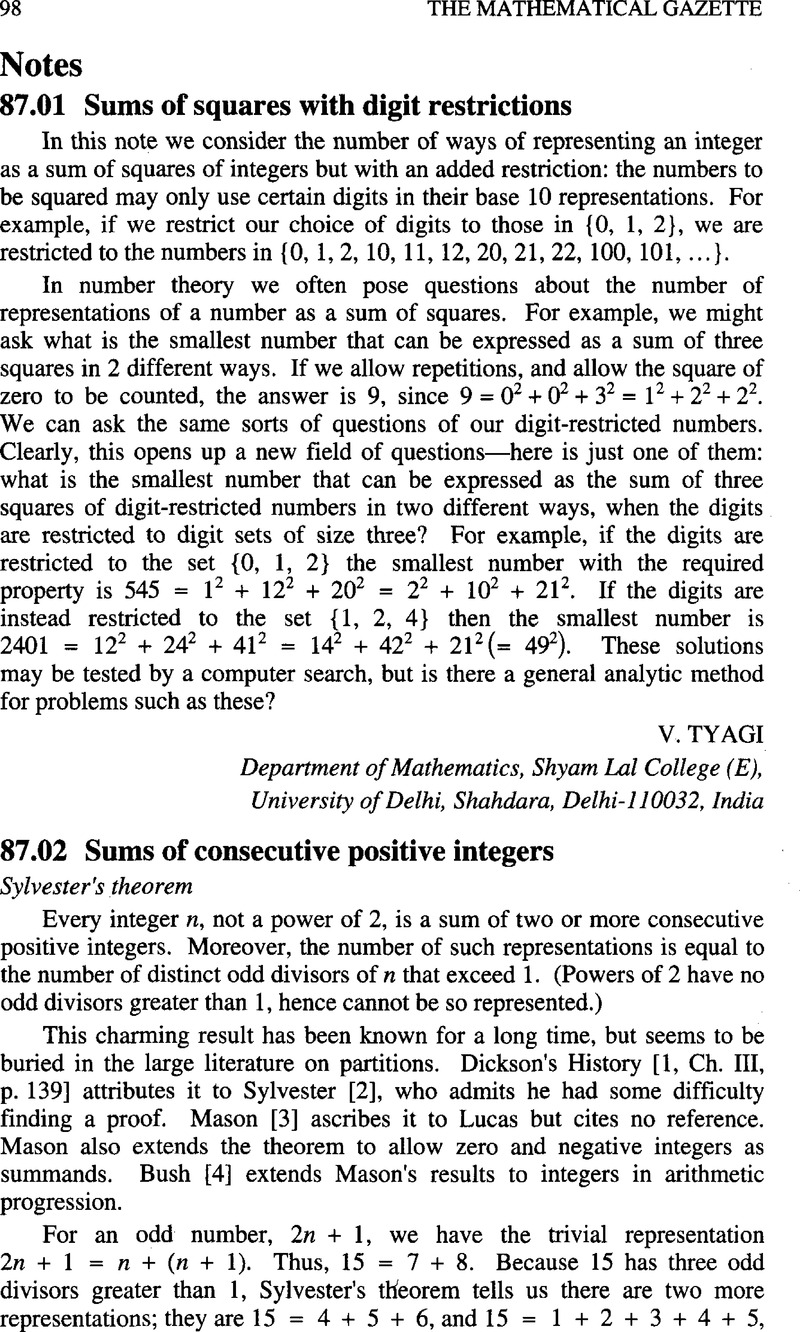Article contents
87.02 Sums of consecutive positive integers
Published online by Cambridge University Press: 01 August 2016
Abstract
An abstract is not available for this content so a preview has been provided. Please use the Get access link above for information on how to access this content.

- Type
- Notes
- Information
- Copyright
- Copyright © The Mathematical Association 2003
References
1.
Dickson, L. E., History of the theory of numbers, Vol. 2, Carnegie Institution of Washington, Washington, D.C. (1919); reprinted by Chelsea, New York (1966).Google Scholar
2.
Sylvester, J. J., A constructive theory of partitions, arranged in three acts, an interact and an exodion, Amer. J. Math.
5 (1882) pp. 251–330.CrossRefGoogle Scholar
3.
Mason, T. E., On the representation of an integer as the sum of consecutive integers, Amer. Math. Monthly
19 (1912) pp. 46–50.CrossRefGoogle Scholar
4.
Bush, L. E., On the expression of an integer as the sum of an arithmetic series
Amer. Math. Monthly
37 (1930) pp. 353–357.CrossRefGoogle Scholar
- 2
- Cited by


